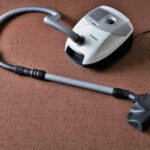After buying a gorgeous set of bedsheets, the next thing that puzzles the mind is whether to wash them or not.
Unlike thrifted items, new clothes and sheets provide the confidence of having not been worn before. Accordingly, there is very little to worry about in relation skin conditions or other forms of infections that can be transmitted through skin contact.
Should You Wash New Sheets Before Using Them? Expert Opinion

Realsimple.com sought expert opinion on this topic and the answer was that you should wash new sheets before using them.
Ideally, the process of manufacturing bedsheets involves the use of multiple chemical products. Some of these can cause irritation depending on your level of skin sensitivity.
Besides, if you have ever been to a manufacturing firm, you might have an idea of how items are handled.
Sometimes, they come into contact with the floor or other surfaces that are not so clean.
Generally, the process of clothes leaving the manufacturing firm and getting to the final customer involves many steps that can raise hygiene questions.
It is also important to look at the material of your sheets before making a decision. Some fabrics release color when they are new. However, this stops after the first wash or continues with succeeding washes.
If the first wash will help remove excess dyes that can leave stains on your mattress and night garments, then it is worth consideration.
Overall, the decision you make entirely depends on you.
In the end, the most important thing is to settle on what makes you comfortable.
How to Wash New Sheets
Washing new sheets is one of the most straightforward tasks. The most critical step is reading the instructions tag on the items.
This provides guidelines on whether the sheets are hand washable, machine washable or both. It also indicates whether it is appropriate to take them for dry-cleaning.
Whichever method the manufacturer recommends, clean new sheets lightly because there is little or no dirt to remove.
However, it is essential that you consider a detergent or natural cleaning agent that can destroy chemical toxins.
How to Wash Bedsheets.
Bedsheets should be washed regularly to remove ordinary dirt, sweat and body oils that build up over time. In most cases, it is best to wash them once a week. All the same, the period can be shorter or longer depending on soiling and how often they are used.
Most bedsheets can be washed in the machine or by hands. However, there are delicates fabrics that require special care. Below are machine and hand-washings steps to follow.
Machine washing bedsheets
What you will need
- Detergent
- Baking soda
- Distilled white vinegar
Instructions
Step 1: Read the instructions on the care label. All bedsheets have a tag that provides specific care instructions. The aim is to help you determine whether your set is suitable for hand-washing, machine- washing or dry cleaning. The instructions can also be useful in establishing whether your sheets are bleach-friendly or not.
Step 2: Sort your sheets by color. Although it is safe to combine beddings that have different colors in the same load for some fabrics, avoid the temptation unless you are sure. Washing sheets of different colors in different loads keeps them free color-staining.
Step 3: Fill the washer halfway with water and add detergent. The temperature of water should vary from warm to hot depending on the fabric of your sheets. For example, heavy cotton sheets can be washed in hot water whereas sheets made of polyester should be washed in warm water. This step allows the two to combine well. The result is a solution that is well- balanced for your sheets.
Step 4: Add sheets. The sizes of your sheets and washer should help determine your load. For example, it is important to avoid washing more that a set of king-size sheets to avoid overloading the washer.
Step 5: Choose the appropriate machine setting. Ideally, the choice should depend on your washing machine. Some machines provide a setting for bed sheets while others do not. The appropriate wash cycle is important so that your sheets can come out sparking clean.
Step 6: Add 2 cups of vinegar and 1/2 cup baking soda to the rinse cycle. This helps freshen your sheets. You can rinse them again with water only if you do not like the smell of vinegar. Alternatively, you can treat the sheets with this solution before washing them.
Step 7: Toss the sheets in a dryer and choose the appropriate setting.
Hand Washing Bed Sheets
Most bedsheets are suitable for hand-washing. If you are not sure about yours, you can find the information on the care tag.
What you will need
- Detergent
- Warm or hot water
- Wash basin/ tub
- Distilled white vinegar
- Baking soda
Instructions
Step 1: Sort the sheets by color. Just like with the washing machine method, you need to separate sheets by color. Some sheets can bleed easily and stain white ones and those of different colors.
Step 2: Fill the wash basin half way with water and add detergent. Cycle with hands until the solution becomes cloudy.
Step 3: Soak your sheets into the solution and let sit for about 15 minutes. Wash each sheet at a time thoroughly. Rub one part of a bedding against another to remove tough dirt.
Step 4: Drain dirty water and rinse the sheets with clean water until all the soap is removed.
Step 5: Hang on the clothesline to dry.
How to Wash White Sheets
White sheets might require a slightly different washing procedure. Essentially, this depends on soiling and the fabric. Generally, most white sheets are made of bleach-friendly fabric, but you can always find the information on the care tag.
What you will need
- Bleach
- Detergent
- Vinegar
- Baking soda
Instructions
Step 1: Fill the washer half way with warm water and add bleach. Load in the sheets and presoak for 15 minutes. If hand-washing, make a solution of water and bleach in a bucket that has a lid. Proceed with pre-soaking.
Step 2: Wash the sheets thoroughly in warm water and detergent. Ensure that you choose the right settings for machine-washing.
Step 3: Add two cups of vinegar and a half cup of baking soda to the rinse cycle to freshen your sheets. You can also carry out this step before washing if you do not like the smell of vinegar. It helps freshen laundry.
Step 4: Transfer the sheets into a dryer and choose the appropriate setting.
Tips for Washing and Caring for Sheets
- Avoid using fabric softeners on sheets. They leave traces of chemicals thereby ruining the fabric fibers.
- Wash sheets in warm instead of hot water. Extremely high temperatures have the potential to damage fabric fibers. This results to excessive wrinkling and speedy wear and tear.
- Iron sheets after washing. Besides reducing wrinkles, this keeps the beddings in good condition and free from germs.





